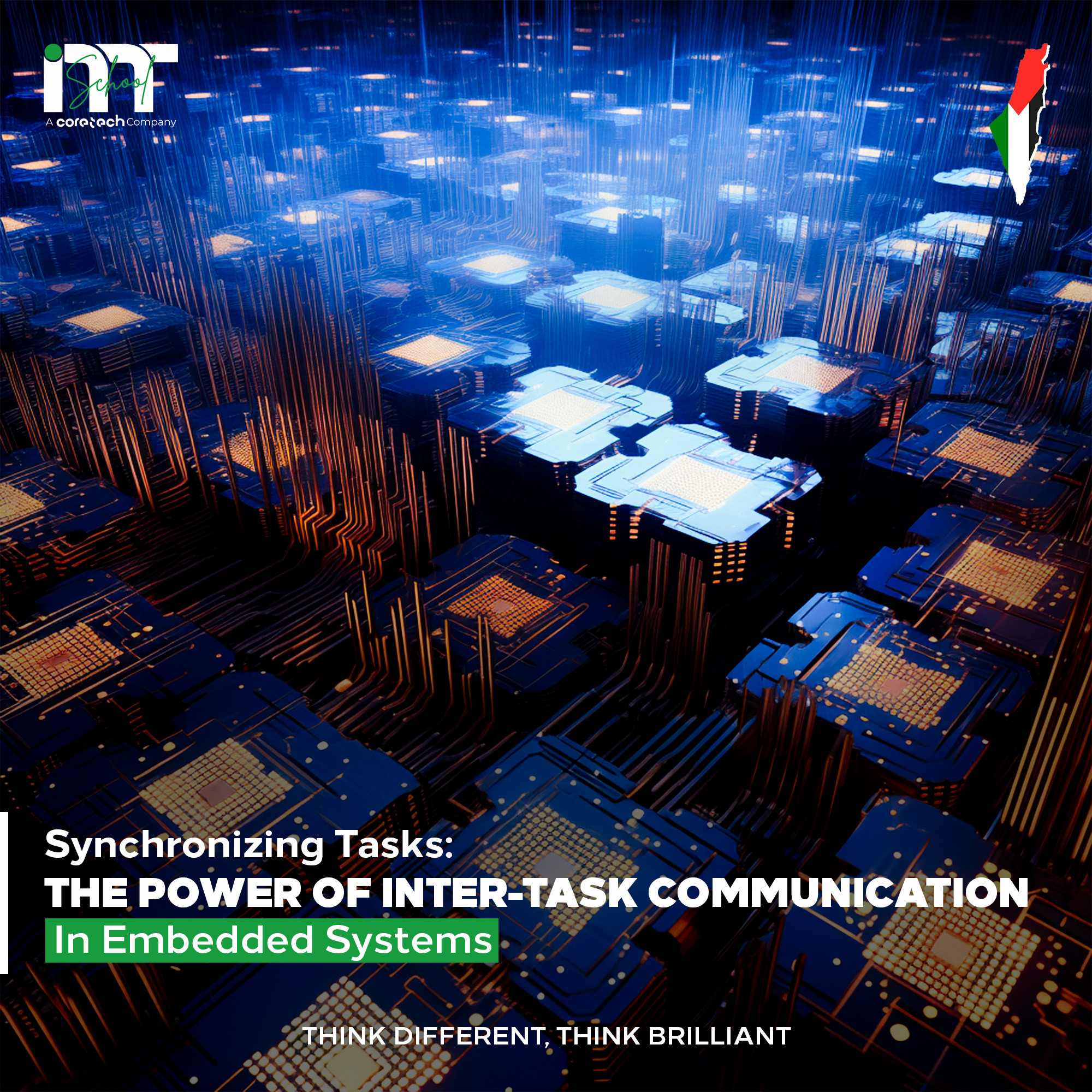
Inter-Task Communication (ITC)
Inter-Task Communication (ITC) is pivotal in the realm of embedded systems, especially for those running on Real-Time Operating Systems (RTOS). ITC allows different tasks (or threads) within the system to exchange information seamlessly, fostering synchronization and coordination! 🔄🔧
🌐 Techniques of Inter-Task Communication:
-
Message Queues:
-
Enables tasks to send and receive messages in FIFO order.
-
Ideal for transmitting data between tasks without the need for them to run concurrently.
-
-
Semaphores:
-
Acts as a signaling mechanism between tasks.
-
Binary semaphores are used for resource access control, while counting semaphores manage resource units.
-
-
Mutexes:
-
Primarily used for resource protection, ensuring that only one task accesses the resource at a given time.
-
-
Event Flags:
-
Tasks can set, clear, or wait for one or multiple event flags, facilitating efficient event-driven programming.
-
-
Pipes and Mailboxes:
-
Pipes allow tasks to read and write data in a byte stream, while mailboxes enable sending and receiving of fixed-size messages.
-
-
Memory Blocks:
-
Tasks can allocate, deallocate, or exchange blocks of memory, aiding in dynamic memory management.
-
🛠️ Selecting the Right Technique:
-
Opt for message queues for asynchronous data transfer between tasks.
-
Use semaphores for simple synchronization or signaling.
-
Mutexes are ideal for protecting shared resources from concurrent access.
-
Event flags suit systems requiring responsive task activation based on specific events.





